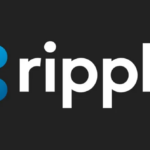Ripple vs. SEC: Could XRP Become America’s Digital Gold?

In a legal battle that may redefine cryptocurrency regulations, Ripple Labs is currently entangled in a significant dispute with the U.S. Securities and Exchange Commission (SEC). Ripple’s CEO, Brad Garlinghouse, has raised eyebrows by proposing a bold idea of designating XRP as America’s official digital asset reserve. This move, if implemented, could signal a groundbreaking shift in the digital currency landscape of the United States.
Speculation has been rife following the SEC’s recent maneuvering of the Ripple case on its website, with many interpreting it as a potential prelude to a settlement. However, industry experts remain cautious, viewing this as a procedural adjustment rather than an indication of imminent resolution. The appointment of Acting SEC Chair Mark Uyeda during this critical juncture could play a pivotal role in shaping future regulatory decisions within the cryptocurrency sphere.
The implications of recognizing XRP as the national digital asset hold significant weight. While it could confer heightened legitimacy and stability to cryptocurrencies, there are concerns about the advent of stricter regulations that could curb innovation and disrupt the decentralized essence of the crypto realm. As this high-stakes drama unfolds, industry observers are anxiously awaiting the outcome that could determine the trajectory of digital currency in the U.S.
The ongoing legal tussle between Ripple Labs and the SEC carries profound implications for the future of cryptocurrency regulation in America. Recent developments have fueled conversations about the prospective role of XRP as a national digital asset, prompting reflections on its broader impact on the cryptocurrency ecosystem.
Anticipating a formal recognition of XRP as a national digital asset triggers projections of market stability, with potential investment surges of 15-25% in the crypto sector. Clear regulatory guidelines could attract institutional investors cautious of legal ambiguities, fostering more significant financial inflows. However, there are pros and cons associated with this scenario, exemplified by enhanced market legitimacy alongside concerns of intensified government oversight stifling creativity and imposing centralized controls conflicting with the ethos of decentralized currencies.
In practical terms, XRP’s elevation to a national digital asset could expand its utility across various applications, such as cross-border payments, remittances, and decentralized finance platforms. This enhanced functionality inevitably heightens competition with traditional financial systems, paving the way for substantial market disruptions. Yet, the operational constraints posed by ongoing litigations and market volatilities should caution investors to navigate carefully, mindful of regulatory nuances that might impact XRP’s viability.
The ongoing focus on digital asset regulation underscores a broader trend among financial institutions seeking to incorporate blockchain technology into their service offerings, hinting at a more entrenched digital economy by 2025. Ultimately, the Ripple vs. SEC saga encapsulates a broader struggle between innovation and regulation within the financial domain, underscoring the need for developing governance models that balance decentralization with consumer protections amidst the evolving crypto landscape.





